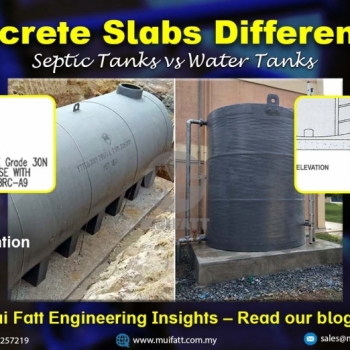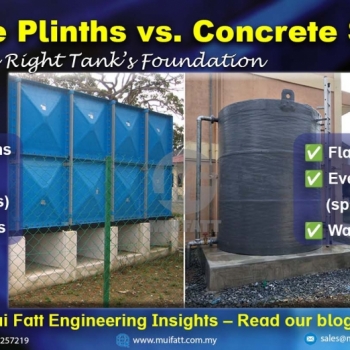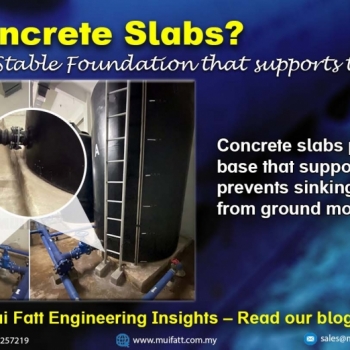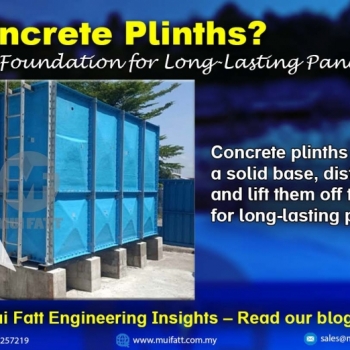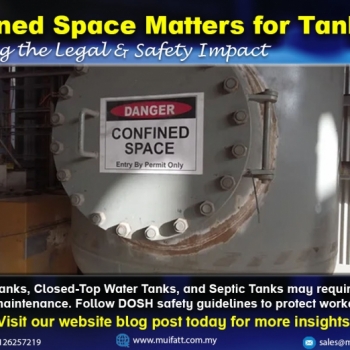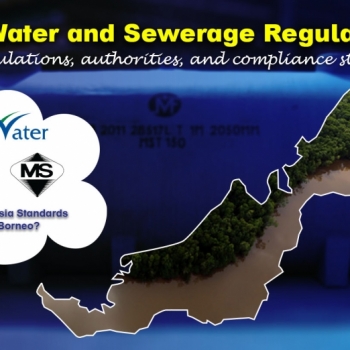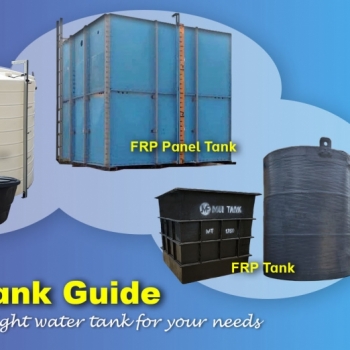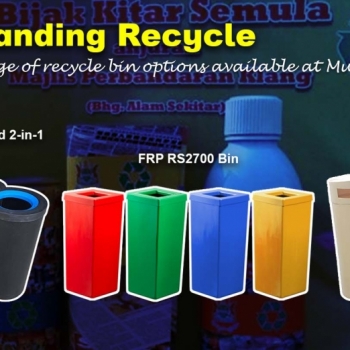Understand the key differences between concrete slabs used for water tanks and septic tanks. Learn about their functions, compliance standards, structural needs, and when to use each, so you can make the right decision for a safe and long-lasting installation.
Unleash the Potential of Architectural Color Preservation with Unsaturated Polyester Resin Coatings
24 Aug 2023
Looking to protect and enhance the durability of various surfaces? Unsaturated polyester resin surface coating is here to revolutionize your approach. This remarkable solution provides a strong and protective layer that shields against corrosion, UV radiation, and chemical damage. Whether you're in the automotive, construction, or marine industry, this versatile coating will meet your needs.
Unsaturated polyester resin surface coating is formulated using a combination of methyl methacrylate monomer, silane coupling agent, propylene glycol, and KOH mg. Through this unique blend, it offers exceptional resistance and longevity to surfaces subjected to harsh environments. Say goodbye to worries about fading colors or weakened structures!
With its widespread application in various industries, unsaturated polyester resin surface coating has become an indispensable asset for professionals seeking reliable protection. Its durability and versatility make it an ideal choice for safeguarding surfaces exposed to demanding conditions.
So why settle for subpar protection when you can have a robust solution? Discover the power of unsaturated polyester resin surface coating today!
Composition of Unsaturated Polyester Resin Coating
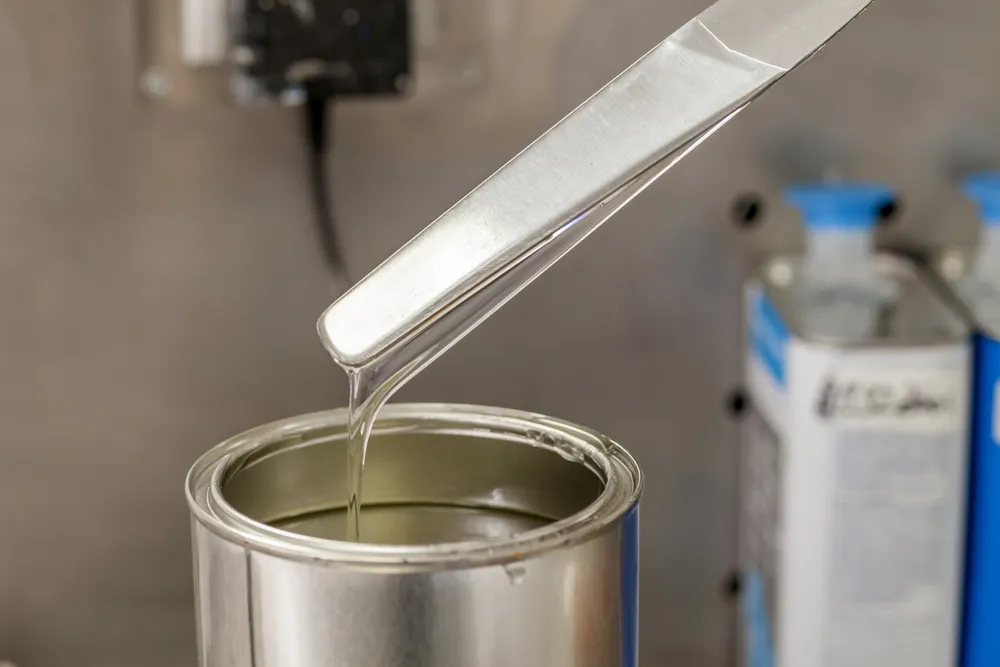 Unsaturated polyester resin coating is a versatile material used in various industries due to its unique composition. This type of coating is typically made up of unsaturated polyester resin, fillers, additives, and curing agents. Each component plays a crucial role in determining the properties and performance of the coating.
Unsaturated polyester resin coating is a versatile material used in various industries due to its unique composition. This type of coating is typically made up of unsaturated polyester resin, fillers, additives, and curing agents. Each component plays a crucial role in determining the properties and performance of the coating.
The unsaturated polyester resin is the primary ingredient in this type of coating. It is formed by reacting an unsaturated acid with a glycol or diol compound. This combination results in a liquid resin that can be easily applied to different surfaces. The unsaturated polyester resins used for surface coatings are specifically formulated to provide excellent adhesion, durability, and resistance to environmental factors.
To enhance specific characteristics or meet certain application requirements, fillers are often added to the unsaturated polyester resin coating composition. These fillers can include materials such as calcium carbonate, talc, or glass fibers. By incorporating fillers into the coating formulation, various properties like hardness, impact resistance, and thermal stability can be improved.
Additives also play a significant role in modifying the performance of unsaturated polyester resin coatings. These additives can include UV stabilizers, pigments for coloration, flow control agents for better application consistency, and thickeners to adjust viscosity. Depending on the desired outcome or application needs, different combinations of additives can be incorporated into the coating formulation.
Curing agents are essential components that enable the hardening or crosslinking of the unsaturated polyester resin upon application. Commonly used curing agents include peroxides or catalysts that initiate chemical reactions within the resin matrix during curing processes such as heat or UV exposure. The choice of curing agent influences factors like curing time and final mechanical properties.
One notable advantage of using unsaturated polyester resin coatings is their customizability through the selection and proportioning of these components. By adjusting ratios and incorporating specific additives based on the desired performance, manufacturers can tailor the coating to meet specific application requirements. For example, a coating intended for outdoor use may require UV stabilizers and weather-resistant additives, while a coating for industrial machinery might prioritize chemical resistance.
Quick-drying Properties of Unsaturated Polyester Resin Coating
Unsaturated polyester resin surface coatings are widely recognized for their quick-drying properties, making them a popular choice in various industries. This article explores the reasons behind their rapid drying times and how they contribute to efficient application and faster project completion.
Chemical Composition Enhancing Drying Time
The chemical composition of unsaturated polyester resin coatings plays a crucial role in their quick-drying properties. These coatings typically consist of a combination of resins, monomers, and additives that promote fast curing reactions. By carefully selecting the components, manufacturers can create formulations with optimal drying characteristics.
Efficient Application and Faster Project Completion
The ability of unsaturated polyester resin coatings to dry quickly offers several advantages. With shorter drying times, professionals can apply multiple coats within a shorter span, reducing downtime between layers. This efficiency translates into faster project completion, allowing businesses to meet deadlines more effectively.
Moreover, the reduced drying time enables quicker handling or packaging of coated products. In industrial settings where large volumes require coating applications, this accelerated process significantly increases productivity levels.
Hydrophobic Properties and Reduced Wetting Time
Unsaturated polyester resin coatings exhibit hydrophobic properties due to their molecular structure. This characteristic allows them to repel water effectively, resulting in reduced wetting time during the drying process. As a result, these coatings do not absorb moisture from the environment as readily as other types of surface finishes.
The hydrophobic nature also contributes to improved adhesion properties when applied on substrates. The reduced wetting time ensures better bonding between the coating and the surface being coated, enhancing overall durability.
Controlling Viscosity for Rapid Drying
Viscosity plays a vital role in determining the drying speed of unsaturated polyester resin coatings. Manufacturers carefully control the viscosity by adjusting factors such as dope viscosity and reaction time during formulation. A lower viscosity index allows for faster evaporation of solvents, resulting in quicker drying times.
Evaluating Drying Speed: Water Contact Angle and Snappiness Index
To measure the quick-drying properties of unsaturated polyester resin coatings, two key parameters are commonly used: water contact angle and snappiness index.
The water contact angle refers to the angle formed by a droplet of water on the coating surface. A higher water contact angle indicates better hydrophobicity and faster drying times. This measurement is crucial in assessing the coating's ability to repel moisture effectively.
The snappiness index quantifies the time it takes for a coating to reach a specific level of dryness upon touch.
Surface Coating of Unsaturated Polyester Resin on Different Substrates
Unsaturated polyester resin surface coatings are highly versatile and have the ability to adhere well to various substrates such as metal, concrete, wood, and fiberglass. This makes them a popular choice for a wide range of applications where surface protection is crucial.
The key advantage of using unsaturated polyester resin for surface coating is its ability to form a strong bond with different substrates. This bond enhances the overall durability and ensures long-lasting protection even in challenging environments. Whether it's a metal structure exposed to harsh weather conditions or a wooden surface subjected to constant wear and tear, the application of unsaturated polyester resin can significantly enhance the lifespan of these substrates.
One important aspect when applying unsaturated polyester resin coatings is proper surface treatment. Before applying the coating, it is essential to prepare the substrate by cleaning and removing any contaminants that may hinder effective adhesion. This can be achieved through techniques such as sanding, degreasing, or chemical etching.
In addition to traditional unsaturated polyester resin coatings, hybrid coatings have gained popularity in recent years. These hybrids combine the benefits of different types of resins, such as acrylic resin or vinyl monomers, resulting in improved performance characteristics. For example, combining an acrylic resin with unsaturated polyester resin can enhance coating wear resistance while maintaining excellent adhesion properties.
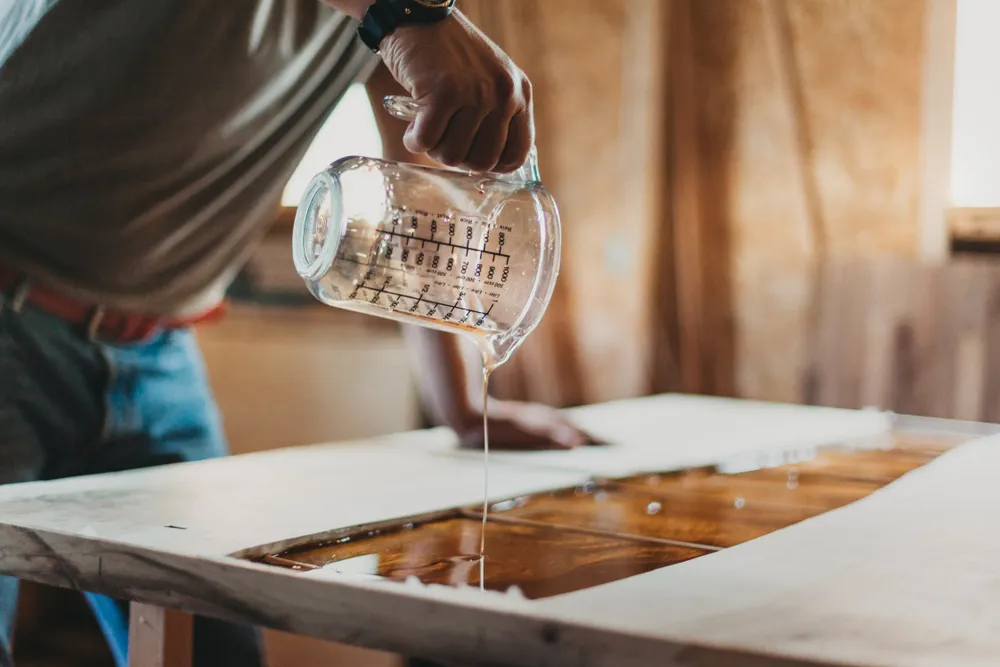 Additional considerations need to be taken into account. Glass substrates typically have low surface energy which can hinder adhesion. To overcome this challenge, special primers or gelcoats are often used before applying the unsaturated polyester resin top coat. These primers increase the surface energy and promote better bonding between the glass substrate and the coating.
Additional considerations need to be taken into account. Glass substrates typically have low surface energy which can hinder adhesion. To overcome this challenge, special primers or gelcoats are often used before applying the unsaturated polyester resin top coat. These primers increase the surface energy and promote better bonding between the glass substrate and the coating.
Similarly, when working with composite materials made from polymers or fiber-reinforced matrices, it is important to ensure compatibility between the unsaturated polyester resin and the composite. This can be achieved by selecting a resin solution that is specifically designed for composites, ensuring proper polymerization and adhesion to the surface.
Enhancing Surface Protection with Unsaturated Polyester Resin Coatings on Architectural Structures
Architectural structures face numerous challenges from weathering effects like rain, sun exposure, and pollution. To combat these issues and ensure long-lasting protection, the use of unsaturated polyester resin surface coatings has become increasingly popular. These coatings not only shield buildings but also preserve their aesthetic appeal over an extended period.
One of the primary benefits of applying unsaturated polyester resin coatings is their ability to prevent degradation by forming a barrier against moisture penetration. Moisture can seep into building materials, leading to structural damage and compromising the integrity of the entire structure. However, when a coating containing unsaturated polyester resin is applied, it acts as a protective shield that prevents water from infiltrating the underlying surfaces.
Moreover, these coatings exhibit excellent water resistance due to the chemical modifiers present in unsaturated polyester resins. The addition of silane coupling agents enhances water repellency and strengthens bonds between the coating and substrate. This ensures that even under heavy rainfall or high humidity conditions, the coating remains intact and continues to provide effective protection.
Unsaturated polyester resin coatings also offer exceptional durability in harsh environments. They can withstand extreme heat without losing their protective properties or showing signs of deterioration. This makes them particularly suitable for architectural structures exposed to direct sunlight or intense heat sources.
Another advantage lies in their ability to preserve the whiteness of architectural surfaces over time. Coating whiteness is crucial for maintaining a fresh appearance and ensuring that structure retain their visual appeal. Unsaturated polyester resin coatings contain titanium dioxide as a key ingredient, which acts as a pigment responsible for reflecting light and preserving brightness.
The curing process plays a vital role in achieving optimal performance from these coatings. When exposed to certain conditions such as heat or UV radiation, free radicals are generated within the coating material. These free radicals initiate cross-linking reactions that result in a hardened film on the surface. This curing mechanism enhances the coating's resistance to physical and chemical stresses, ensuring long-term protection.
Unleash the Potential of Architectural Color Preservation with Unsaturated Polyester Resin Coatings
Architectural surfaces are often subject to harsh environmental conditions and constant exposure to UV rays, leading to fading and loss of vibrant colors over time. However, with the use of unsaturated polyester resin surface coatings, it is now possible to retain the visual impact of buildings while reducing maintenance needs.
Retains vibrant colors on architectural surfaces for an extended time
Unsaturated polyester resin coatings have proven to be highly effective in preserving the vibrant colors of architectural structures for an extended period. These coatings form a protective layer that acts as a barrier against external factors such as UV rays, moisture, and pollutants. By preventing color degradation caused by these elements, they ensure that architectural surfaces maintain their original vibrancy for years.
Protects against fading caused by UV rays or harsh environmental conditions
One of the primary benefits of using unsaturated polyester resin surface coatings is their ability to protect against fading. UV rays from sunlight can cause significant damage to paint and other surface finishes, resulting in dull and faded colors. However, these specialized coatings contain additives that act as UV absorbers, shielding the underlying layers from harmful radiation. This protection extends the lifespan of architectural surfaces while maintaining their aesthetic appeal.
Sustains the visual impact of buildings while reducing maintenance needs
As urban landscapes continue to evolve, vibrant and artistic architectural designs have become increasingly prevalent. Take, for instance, the stunning kaleidoscope of colors that adorns some of the world’s iconic structures:
- Elmina Valley Rainbow Bridge, Shah Alam (Malaysia): A stunning bridge adorned with vibrant rainbow hues.
- Museum Brandhorst, Munich (Germany): A simple elongated building of three interconnecting volumes which are distinguished by cladding of different colors and hues.
- Sugamo Shinkin Bank, Ekoda Branch, Tokyo (Japan): A vibrant and artistic bank building that stands out in the city.
- Terminal 4, Barajas Airport, Madrid (Spain): The airport has a terminal building that is very eye-catching with its vibrant colors and attractive appearance.
- Pixel, Melbourne (Australia): A unique and colorful structure that adds vibrancy to the cityscape.
- College of Art and Design of Toronto, Toronto (Canada): An artistic and vibrant college building that showcases creativity.
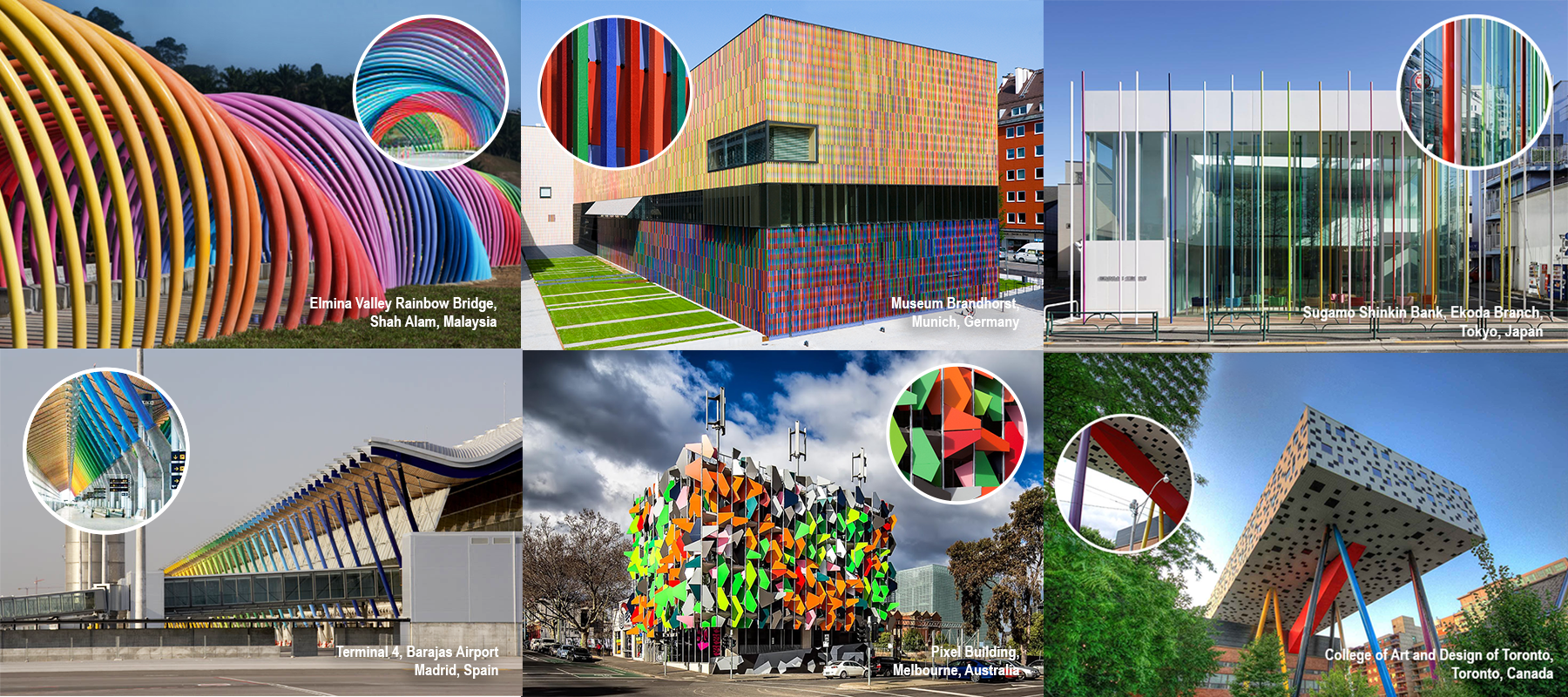 These colorful structures are not only architectural marvels but also expressions of creativity and cultural identity.
These colorful structures are not only architectural marvels but also expressions of creativity and cultural identity.
However, while these striking hues captivate the eye, they are also subject to the relentless forces of nature. The harsh rays of the sun, relentless rain, and air pollutants can gradually erode the brilliance of these colors over time. This is where the importance of protective coatings comes to the fore. Applying unsaturated polyester resin (UPR) based solutions, becomes crucial to preserve the vibrancy and integrity of these colorful facades.
In the realm of architectural conservation, it's not just about maintaining aesthetics, but also safeguarding the heritage and story behind these buildings. By applying tailored protective coatings, we can ensure that these colorful structures continue to inspire awe for generations to come, standing strong against the tests of time and the elements. As a result, buildings or structures can maintain their visual impact without frequent touch-ups or repainting. This not only saves time but also reduces long-term maintenance costs.
Application Process of UPR Protective Coatings to Architectural Elements
Unsaturated Polyester Resin (UPR) surface coatings are efficiently applied to architectural elements using various techniques. The application process involves several steps:
- Step #1 Surface preparation: clean, dry, and free from contaminants
- Step #2 UPR coating modification for desired properties
- Step #3 Mix UPR components according to formulation
- Step #4 Apply coating using spraying equipment or brushes
- Step #5 Cure coating through cross-linking reactions
- Step #6 Conduct testing procedures for quality and performance
To begin with, surface preparation is crucial for the successful application of UPR coatings. This step ensures that the substrate is clean, dry, and free from any contaminants that could hinder adhesion. Proper cleaning methods may include sanding, degreasing, or using chemical treatments depending on the type of substrate being coated.
Once the surface is adequately prepared, the UPR coating can be applied. The coating itself may undergo modifications to enhance specific properties such as durability or aesthetics. These modifications can involve adding additives or pigments to achieve desired effects like improved UV resistance or color matching.
The application process typically starts with mixing the UPR components according to a specific formulation. This mixture is then applied to the prepared surface using spraying equipment or brushes. Spraying allows for a more uniform coverage over large areas, while brushing provides better control for intricate details.
After applying the UPR coating, it undergoes a curing process involving cross-linking reactions between resin molecules. This chemical interaction creates a three-dimensional network structure that gives the coating its strength and durability. Curing can occur through various methods such as heat activation or exposure to ultraviolet light.
To ensure quality and performance, testing procedures are often conducted during and after the application process. These tests may include measuring film thickness using specialized machines, evaluating thermal resistance through temperature cycling tests, or assessing visual appearance through gloss measurements.
Examples of architectural elements where UPR protective coatings find extensive use include exterior facades, window frames, doors, and decorative features like sculptures or claddings. Each component requires specific attention during surface preparation and coating application due to their unique shapes, sizes, and material characteristics.
Exploring Different UPR Types for Architectural Protection
Unsaturated polyester resin (UPR) surface coatings are widely used in architectural applications due to their excellent protective properties. There are various types of UPR available, each offering specific advantages depending on the desired level of protection and environmental factors.
Various Types of UPR
- Orthophthalic Resins:
- Orthophthalic resins are the most commonly used type of UPR in architectural coatings.
- They provide good mechanical strength and chemical resistance, making them suitable for a wide range of applications.
- These resins are cost-effective and offer a balance between performance and affordability.
- Isophthalic Resins:
- Isophthalic resins offer enhanced chemical resistance compared to orthophthalic resins.
- They exhibit excellent resistance to corrosion from acids, alkalis, and solvents.
- Isophthalic resins are often preferred for applications where exposure to harsh chemicals is a concern.
- Vinyl Ester Resins:
- Vinyl ester resins combine the benefits of polyester resins with epoxy functionality.
- They possess superior chemical resistance, especially against corrosive environments.
- These resins also exhibit exceptional fire retardancy properties, making them suitable for fire-prone areas.
Specific Properties Offered by Each Type
- Improved Chemical Resistance: Isophthalic and vinyl ester resins outperform orthophthalic resins in terms of chemical resistance. They can withstand exposure to aggressive chemicals without degradation or loss of protective qualities.
- Enhanced Fire Retardancy: Vinyl ester resins stand out. Their inherent flame-resistant properties make them ideal for architectural coatings in areas where fire safety is a priority.
- Mechanical Strength: Orthophthalic resins provide good mechanical strength, ensuring durability and resistance to physical damage. They can withstand impact and abrasion, making them suitable for high-traffic areas.
Selection Considerations
When selecting the appropriate UPR type for architectural protection, several factors should be considered:
- Level of Protection Required: Evaluate the specific needs of the architectural project. Determine whether chemical resistance, fire retardancy, or mechanical strength is the primary concern.
- Environmental Factors: Assess the environmental conditions to which the coating will be exposed. Consider factors such as temperature fluctuations, humidity levels, UV exposure, and potential chemical exposure.
The Role of Reinforcement Material (Optional) in Ensuring Durability
Fiberglass mat or fabric can be added to enhance strength and impact resistance. This reinforcement material plays a crucial role in improving the overall durability of unsaturated polyester resin surface coatings. By incorporating fiberglass into the coating, its ability to withstand mechanical stress is significantly enhanced. The fiberglass fibers act as a reinforcing agent, providing additional structural integrity to architectural elements such as buildings, bridges, and other structures that require long-lasting protection.
Adhesive strength, and mechanical properties, reinforcement materials are essential. Fiberglass mat or fabric reinforces the coating's wear resistance index by preventing premature deterioration caused by friction and abrasion. The interlocking nature of the fiberglass fibers creates a robust bond with the resin matrix, resulting in improved adhesion strength. This enhanced adhesion ensures that the coating remains firmly attached to the substrate even under challenging conditions.
In addition to its mechanical properties, reinforcement materials also contribute to thermal stability. Unsaturated polyester resin surface coatings reinforced with fiberglass exhibit excellent resistance to high temperatures and thermal cycling. This characteristic makes them suitable for applications where exposure to heat or extreme temperature fluctuations is expected.
The choice of reinforcement material depends on various factors such as the desired performance characteristics and specific application requirements. For instance, when manufacturing furniture coatings that need exceptional strength and impact resistance, fiberglass mat is commonly used due to its high tensile strength and flexibility. On the other hand, for industrial applications like protective coatings for pipelines or tanks, fiberglass fabric may be preferred because of its higher tear resistance.
To further enhance performance characteristics like hardness, toughness, and impact resistance, fillers can be incorporated alongside the reinforcement materials. Fillers such as silica or alumina particles improve the coating's mechanical properties and provide additional protection against wear and tear. These fillers also contribute to controlling the roughness of the coated surface, ensuring a smooth and aesthetically pleasing finish.
Conclusion: Advancements and Future Prospects in Unsaturated Polyester Resin Surface Coating
Congratulations! You've now explored various aspects of unsaturated polyester resin surface coating, from its composition to its application process. By understanding the quick-drying properties, surface protection capabilities, and architectural color preservation potential of these coatings, you're equipped with valuable knowledge to enhance your projects. Reinforcement materials (optional) play a crucial role in ensuring durability, and exploring different types of unsaturated polyester resins can further optimize architectural protection.
As you move forward with your surface coating endeavors, remember that advancements in this field continue to offer exciting prospects. Stay up-to-date with the latest developments and innovations to unlock even more possibilities for architectural enhancement and protection. Whether you're working on residential or commercial structures, unsaturated polyester resin coatings can help you achieve remarkable results.
Now it's time for you to take action! Apply the insights gained from this blog post to your next project and witness the transformative power of unsaturated polyester resin surface coatings. Don't hesitate to experiment with different techniques and materials – be bold, be creative, and elevate your architectural designs!
Talk to us for your project today! WhatsApp or email – sales@muifatt.com.my
We guarantee our expertise to you.
Visit our product page for more product details – Unsaturated Polyester Resin
FAQs
Can I apply unsaturated polyester resin coating on any substrate?
Yes, unsaturated polyester resin coating can be applied on a wide range of substrates including concrete, wood, metal, fiberglass, and composites. However, it is important to ensure proper surface preparation before applying the coating for optimal adhesion and performance.
How long does it take for unsaturated polyester resin coating to dry?
The drying time of unsaturated polyester resin coating depends on various factors such as temperature, humidity levels, thickness of the coating applied, and specific product formulation. Generally speaking, it can take anywhere from a few hours to several days for the coating to fully cure.
Are there any environmental benefits associated with using unsaturated polyester resin coatings?
Yes! Unsaturated polyester resin coatings are known for their low volatile organic compound (VOC) content, which makes them environmentally friendly. These coatings offer excellent durability and resistance to weathering, reducing the need for frequent reapplication and minimizing waste.
Can unsaturated polyester resin coatings be used for both interior and exterior applications?
Absolutely! Unsaturated polyester resin coatings are versatile and can be used for both interior and exterior applications. They provide protection against UV radiation, moisture, chemicals, and abrasion, making them suitable for a wide range of surfaces exposed to various environmental conditions.
How long can I expect unsaturated polyester resin coating to last?
The lifespan of unsaturated polyester resin coating depends on factors such as the quality of surface preparation, application technique, exposure conditions, and maintenance. When applied correctly and maintained properly, these coatings can last anywhere from 5 to 20 years or even longer. Regular inspections and touch-ups can further extend their lifespan.
Disclaimer:-
The information provided on this website is for general informational purposes only and does not constitute legal advice. While we strive to ensure the accuracy and reliability of the information provided, we make no representations or warranties of any kind, express or implied, about the completeness, accuracy, reliability, suitability, or availability concerning the information contained herein. Any reliance you place on such information is therefore strictly at your own risk. This website may contain links to other third-party websites. Such links are only for the convenience of the reader, user, or browser; which we do not warrant, recommend, endorse, or assume liability for the contents of the third-party sites.
Keep in touch with us should you be keen on receiving timely updates from us
- Website - https://www.muifatt.com.my/home/
- Facebook - https://www.facebook.com/muifattmarketing
- Instagram - https://www.instagram.com/muifattmarketing/
- Google - https://goo.gl/maps/WxVY13gNcaRTS7Jp6
- Youtube - http://www.youtube.com/@MuiFattMarketing
- TikTok - https://www.tiktok.com/@muifattmarketing
- LinkedIn - https://www.linkedin.com/company/mui-fatt-marketing-sdn-bhd-
- Linktree - https://linktr.ee/muifattmarketing
- Shopee - https://www.shopee.com.my/muifattmarketing
- Lazada - https://www.lazada.com.my/shop/mui-fatt-marketing
Recent Blog
Mui Fatt Engineering Insights - Concrete Plinths vs Slabs
Compare concrete plinths and slabs to understand their roles in water, septic, and sectional tank installations. Learn key differences in design, application, and compliance.
Mui Fatt Engineering Insights - Tank Concrete Slab
Concrete slabs provide stability and safety for water and septic tanks. This blog explains why they are essential, whether they are mandatory, and how they impact installation and maintenance.
Mui Fatt Engineering Insights - Panel Tank Concrete Plinth
Explore the essential role of concrete plinths and C-channels in sectional panel tanks. Learn why they’re standard, how they enhance stability and maintenance, and how Malaysia’s regulations influence their use.
Why Confined Space Safety Regulations Matter in Tank Work
Working inside FRP or PE tanks, like panel tanks, septic tanks, or SSTS, may involve confined space hazards. Understand why compliance with DOSH regulations is essential for your project’s safety and success.
Essential Guidelines for Water & Septic Tanks in Borneo
Understand the regulations and guidelines for water and septic tanks in Borneo, plus compliance with SPAN, IWK, and SIRIM standards in Malaysia.
Essential Guide to Choosing the Right Water Tank for Your Needs
A step-by-step guide on water tank considerations, including material, size, application, and more. Learn how to pick the perfect tank for your needs.
Understanding Recycle Bins: Types, Uses, and Regulations in Malaysia
Learn the differences between recycle and recycling bins, the types of bins by color and material, and why they're essential for waste management in Malaysia. Discover our FRP and PE recycle bins for your needs.
